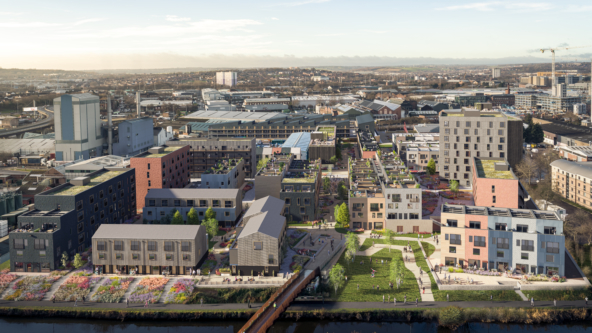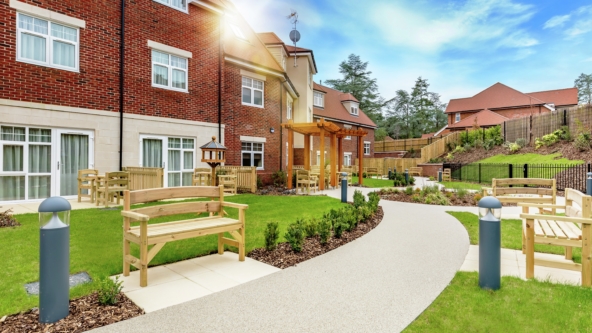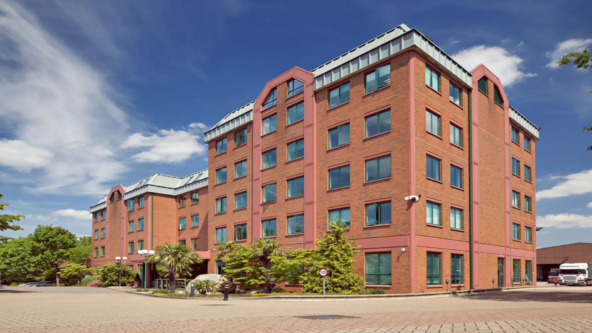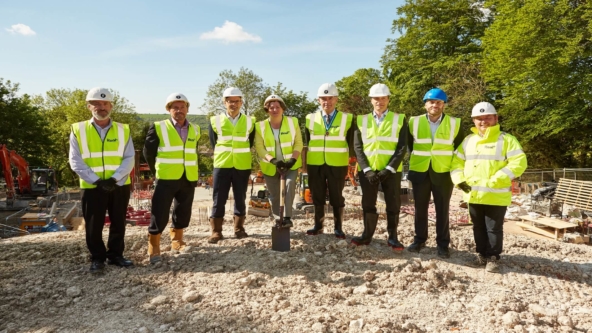Featured on HealthInvestor.co.uk – January 2019
Health and care services are ever-changing to meet the needs of a population that is living longer with increasing and complex health needs. Public funding has not matched increased demand and there are opportunities for private sector investments in healthcare infrastructure both through updating existing estates and delivering modern, fit-for-purpose facilities.
The potential for improvement and the vision for the future are core to current optimism in healthcare infrastructure investment. The team at Octopus Healthcare puts a potential price tag on this opportunity globally – a significant $200 billion to be invested in healthcare infrastructure over the next five years – revealing a healthy appetite for a range of assets across the sector.
Mission exceptional
In 2014, Octopus Group acquired the fund manager MedicX, under then chief executive Mike Adams, and rebranded as Octopus Healthcare. A great deal has happened since; Octopus Healthcare now manages £1.6 billion – across care homes, retirement communities and GP surgeries – near doubling since 2014, and Benjamin Davis has become chief executive, working closely with Adams who has become chairman. For Davis, healthcare is a rewarding sector. “Not only does the sector have strong fundamentals in terms of demand, but it’s incredibly satisfying to invest in an area that is doing good and has societal benefits,” he says.
But what makes Octopus Healthcare different? Davis puts it simply: “For me, it’s our mission: to create exceptional healthcare facilities that you would choose for your loved ones.” There are a few traits that course through the group’s DNA and help to keep that mission in mind, he says. One such trait is “customer obsession”, which Davis explains is intrinsic to how it operates. In theory it’s about understanding customers’ wants and in practice it’s about providing the “exceptional” – exceptional care in exceptional healthcare facilities. “It’s a combination of how buildings are designed, how care is delivered, how staff engage with the users and the residents of those facilities, and the adoption of technology.”
Structurally sound
The structure of Octopus Healthcare is another area where it claims to be different. In addition to an investment team, it has a development team which finds land, secures planning permission and develops healthcare sites. Then there’s the incorporation of clinical expertise. A clinical assurance team ensures the company keeps abreast of the latest clinical governance regulations and CQC matters, as well as vetting any operators that Octopus Healthcare is considering working with. “Our clinical assurance team is critical as they evaluate operators before we partner with them; for example, on their advice, we will sometimes decline an operator because, while financially it might be fantastic, it’s more than the financials that we invest in when we invest in healthcare,” says Davis.
This is a high bar that Octopus Healthcare has set itself and for the operators with which it chooses to work, but such a bar is critical for an organisation interested in forging long-term relationships. Having a long-term focus means having stronger relationships, Davis asserts, and it’s a more effective way of doing business. “We want to find the right people to work with and partner with them – to do repeat business – for the long-term.”
Fortified by demand
Last year was busy for Octopus Healthcare, a year that saw it secure more than £230 million of transactions in the UK elderly care home sector, for instance. Davis notes: “Sector-wide, what’s driving the market has been well publicised, in terms of supply and demand. Demand side demographics is a key driver. The UK is supporting an ageing population, which is having a direct effect on government policy, the care models being developed and, of course, where there’s an appetite for investment.”
There’s increased demand for quality care homes, a positive symptom of a ‘baby boomer’ generation that has prospered. On the flip side, Davis observes, supply is actually falling. Homes are closing down; maybe because they’re not fit-for-purpose – designed inefficiently and failing to meet contemporary needs, for example if they can’t provide en suite facilities.
The lay of the land
Octopus Healthcare was also involved in a £60 million deal to buy four Midlands and Northwest care homes from residential care homes developer New Care Homes (New Care). Octopus’s long-term relationship with New Care helped this deal to nurture, Davis says. “New Care has good insight into the UK health and care sector – and culturally, as well in terms of business, we click.”
However, it’s not just about backing the right operator; what made the acquisition even more attractive is that the sites acquired are strategic. “There’s good supply and demand underwriting the local demographics of the sites and the product that they deliver to the market is really high-quality,” Davis says – which, again, is in line with the company’s mission. “When you’re investing in a healthcare facility, it’s very much about local study and analysis – the micro-location in terms of the village or town, what the population is, the other care homes in the area, and whether there are care homes moving through the planning permission cycle,” he says.
An evergreen investment
Octopus Healthcare Fund started as a limited-life, closed-end fund and was converted to an evergreen fund on the back of institutional demand. Late last year, the fund marked its first anniversary, and it was announced it had raised £187 million. This success, Davis says, is down to the attraction of healthcare investment. The returns, for example, are good and the rent that the funds collect from their operators is linked to inflation. Added to this, there’s usually a long-term lease – 35 years is typical. Then you have the added assurance that returns are broadly uncorrelated to the financial market. “What you have is an investment area that is linked to inflation and driven by demographics, rather than linked to consumer demand,” Davis says.
The healthcare sector has another trump card up its sleeve and that is increasing investor interest in ESG – environmental, social, corporate governance – considerations. “More and more we find that institutional investors want to know what the impact of their investment is and what good their investment is doing, which extends to their underlying investors, too,” Davis says.
Future prospects
What’s on the horizon for Octopus Healthcare? Growth, a continued focus on its core sectors and continued investment from institutional investors with which it has already engaged, as well as the exciting prospect of new investors getting involved.
In the sector, Davis predicts a strong flow of interest into care homes and the retirement sectors. In the UK, the retirement sector is, when you consider comparable markets, in its early stages. In markets such as New Zealand, Australia and the US, 5% to 6% of people live in retirement communities, in the UK it’s 0.6%. However, Davis observes a recent surge of interest in the sector, with big names such as Goldman Sachs moving in and operators starting to set up.
Organisations such as the Associated Retirement Community Operators with its ‘Vision 2030’ goal of having 250,000 people living in retirement communities by 2030 support this.
In terms of healthcare infrastructure investment, Davis is very well placed to lay down some fact-based insights. While no one has a crystal ball, Davis is confident the healthcare sector will continue to perform. Healthcare Infrastructure, Octopus Healthcare’s investment trend survey, revealed that investors in healthcare infrastructure report “high satisfaction with investment performance”. Of the institutional investors surveyed – from the UK, EMEA, Asia and Australia – 71% said they are performing as expected or are over-performing. UK investors reported the strongest levels of satisfaction, with 22% saying that their investments are over-performing. The report illustrates that institutional investment is already attractive for those looking for opportunities in real assets and that, encouraged by market dynamics and demographic fundamentals this is set to continue.







